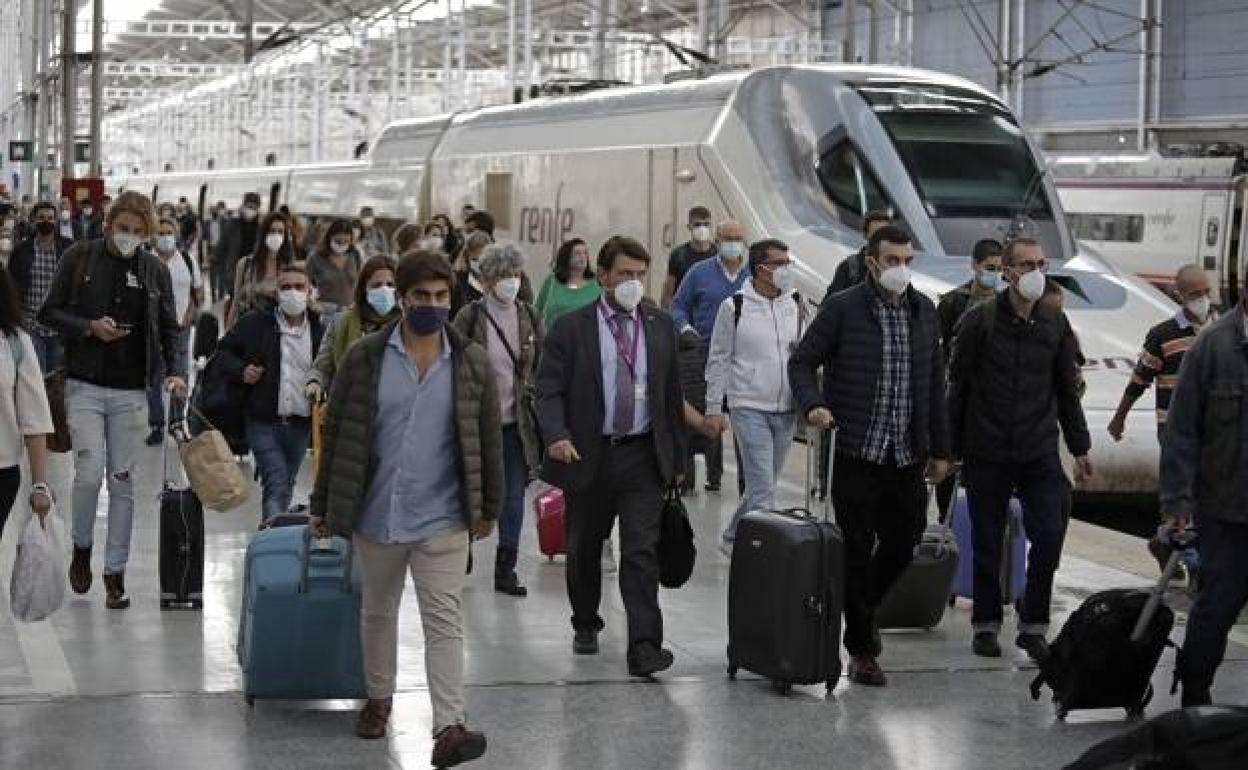The AVE high-speed rail service between Madrid and Malaga is inadequate, say angry travellers
The service is not yet back to pre-pandemic levels, which the Renfe railway company says is due to a shortage of drivers and is affecting the whole of the country
Ignacio Lillo
Malaga
Wednesday, 27 April 2022, 10:42
The AVE high-speed train from Madrid to Malaga on Friday 29 April, at the start of the May Day holiday weekend, has been fully booked for days. For the return trip on Monday 2 May, seats were only available on the first train of the day (8.58am) when SUR checked yesterday, Tuesday. One could say this is more or less normal when there is a bank holiday coming up, and the Renfe rail company insists that it has assigned longer trains to this route so more seats are available than usual.
But there is something else the company is not mentioning, but which regular users of the service have noted: there were more frequent trains before the pandemic, and not all of them have come back into service. There used to be 14 departures each way, but there are now between nine and 11, depending on the day of the week.
Before the pandemic, the first train left the Puerta de Atocha station in Madrid at 7.35am and arrived in Malaga at 10am, while the last one from Madrid left at 9.20pm and arrived at 11.40pm. There were another 12 trains in between.
Now, the last train from Madrid leaves at 7.35pm and many travellers are upset about this, especially those who wanted to go to Malaga later in the evening, after completing their day’s work. Renfe says these services will be resumed in the next few months, but has given no dates.
Comparison with other cities
Compared with other cities, Malaga is not doing very well in terms of high-speed train services. On Friday nine trains will be travelling in each direction between Madrid and the Costa del Sol, but there will be 14 from Madrid to Seville and 15 on the way back.
According to Renfe, there were always more trains on the Seville route before the pandemic, and it is still not running at 100%. In fact, the service is 77% of the pre-pandemic level between Madrid and Malaga and 62% between the Spanish capital and Seville. However, the company insists that it is compensating by making over 4,500 more seats available on the Madrid-Malaga route between 28 April and 3 May, thanks to the use of longer trains.
So if things are going to get back to normal, with more trains and a more frequent service, when will that be? Unfortunately, nobody knows, not even Renfe. The problem is due to a shortage of drivers because so many took other jobs during the pandemic, and this is something that applies all over Spain. It will all depend on how long it takes to attract new drivers to the job and complete their training.
